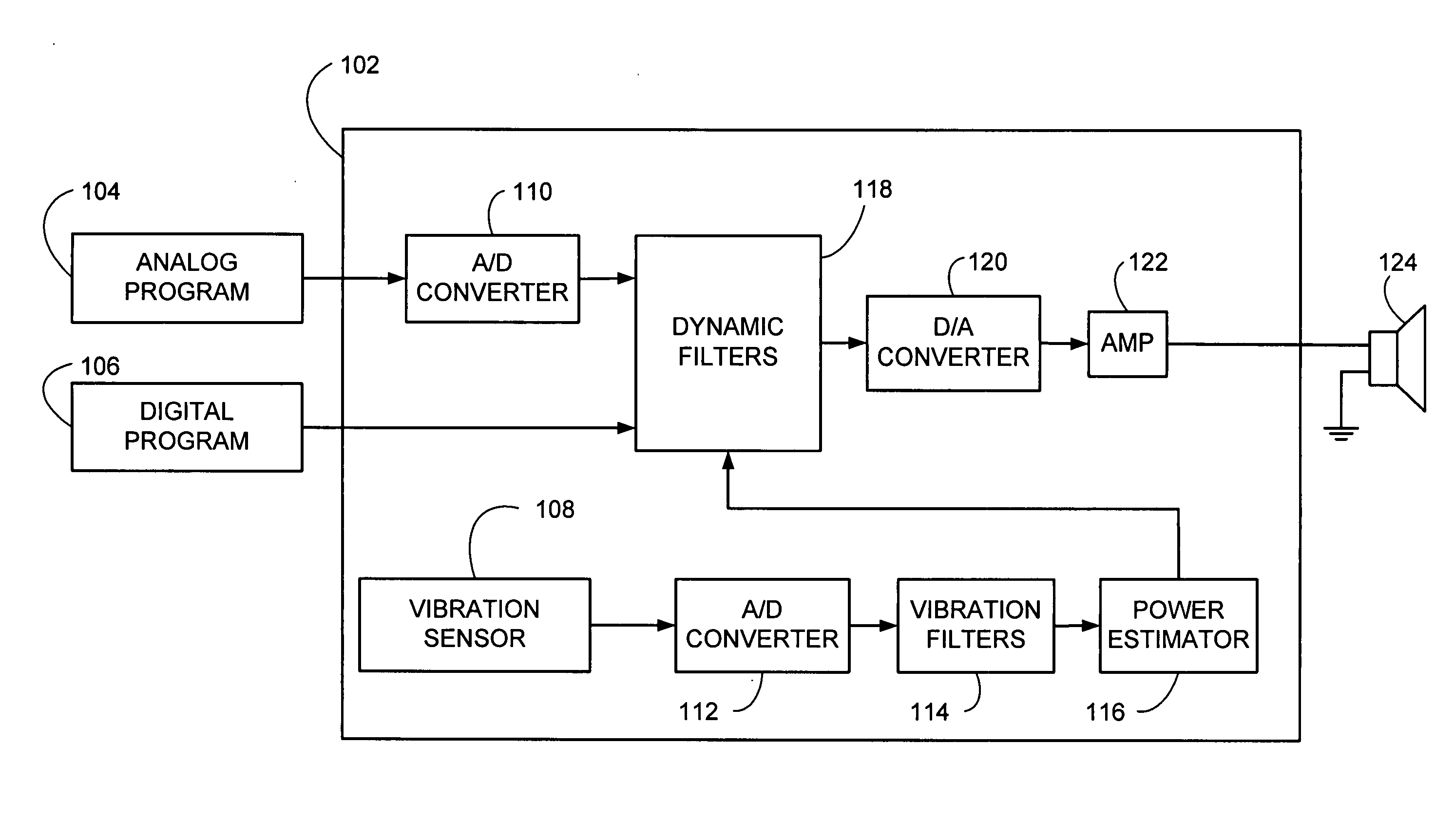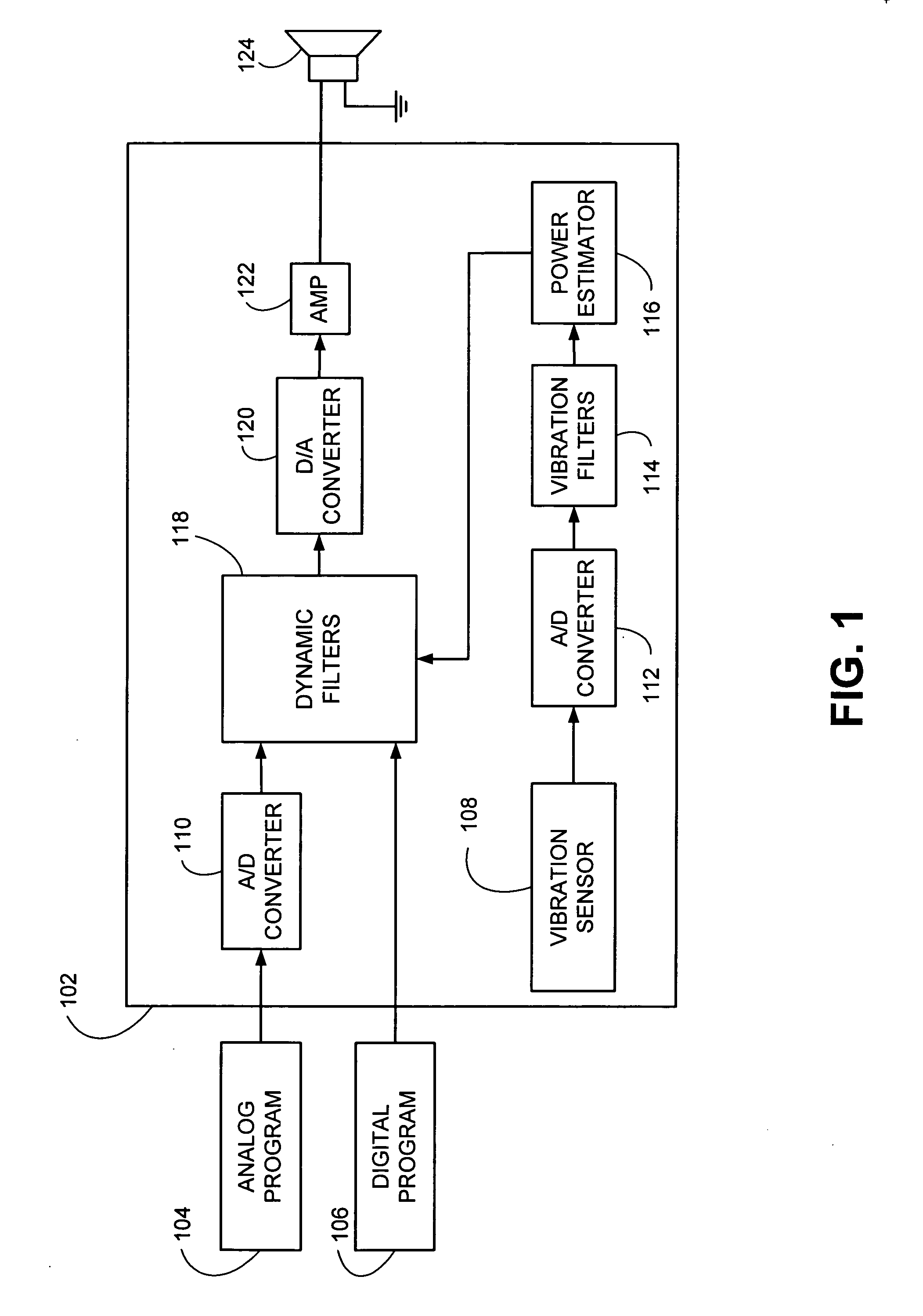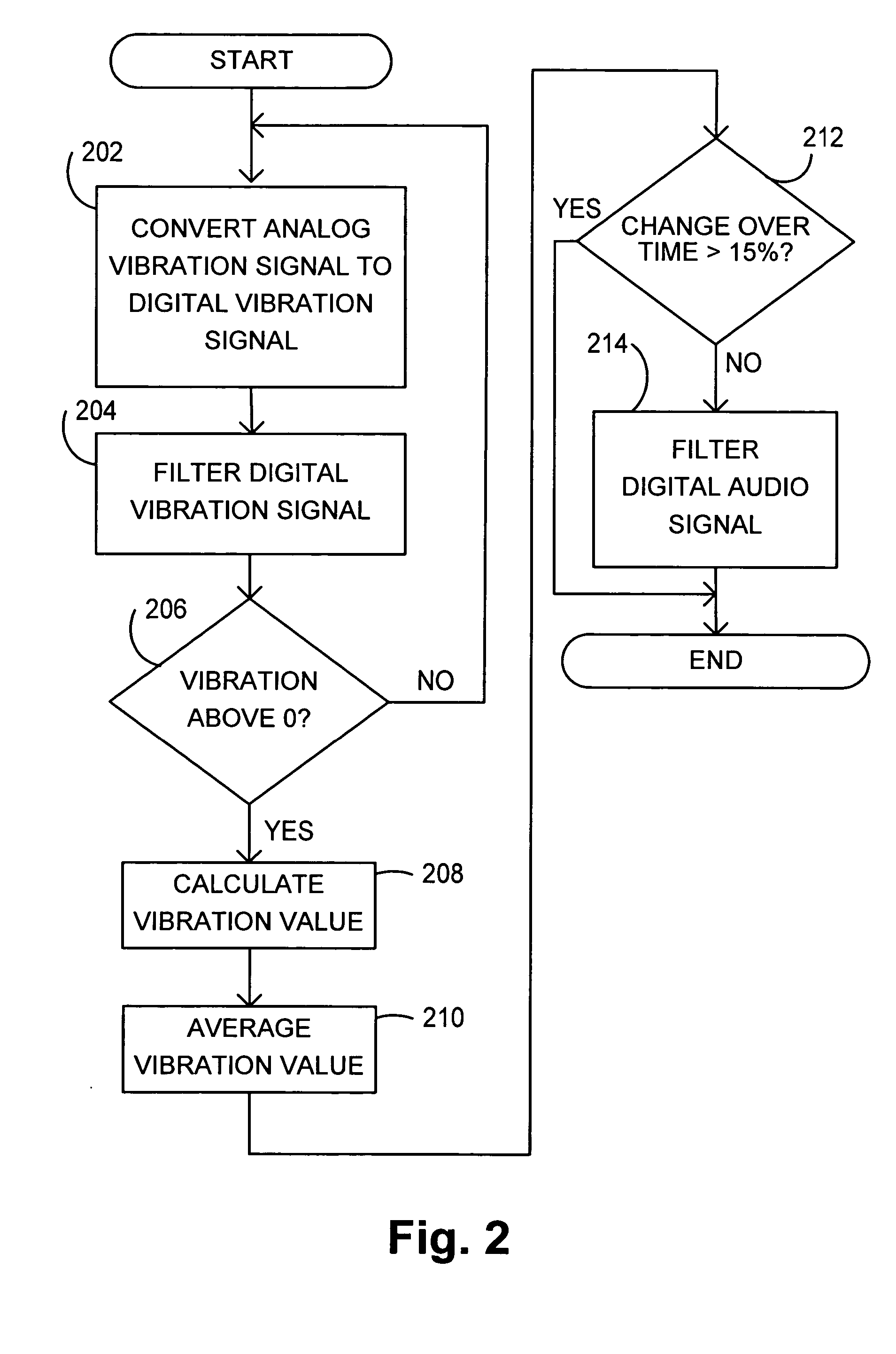Automotive audio controller with vibration sensor
a technology of vibration sensor and automotive audio, which is applied in the direction of frequency response correction, instruments, transportation and packaging, etc., can solve the problems of increasing the gain in response, painfully loud for a listener, and problems such as the problem of automotive audio reproduction system, and achieve the effect of increasing the gain level of the audio signal
- Summary
- Abstract
- Description
- Claims
- Application Information
AI Technical Summary
Benefits of technology
Problems solved by technology
Method used
Image
Examples
Embodiment Construction
[0023] First Automotive Audio Controller
[0024] A first example automotive audio controller 102 for use in an automobile is shown in FIG. 1. The term “automotive audio controllers” as used herein refers to items known in the vernacular as “car stereos” or “car stereo components.” Automotive audio controllers are frequently installed in most types of motorized vehicles. The term “automobile” as used herein refers to motorized vehicles, such as motorcycles, boats, fixed or rotary wing aircraft, or any other vehicles that have an engine and transport passengers. The term “passenger compartment” is used herein to refer to a space in or on a vehicle that is occupied by passengers, such as the cabin of a car or an aircraft, or the space generally between the handlebars and the taillight of a motorcycle.
[0025] The automotive audio controller 102 may be coupled to an analog audio source 104, a digital audio source 106, and at least one speaker 124. The automotive audio controller 102 may b...
PUM
| Property | Measurement | Unit |
|---|---|---|
| cutoff frequency | aaaaa | aaaaa |
| cutoff frequency | aaaaa | aaaaa |
| cutoff frequency | aaaaa | aaaaa |
Abstract
Description
Claims
Application Information
 Login to View More
Login to View More - R&D
- Intellectual Property
- Life Sciences
- Materials
- Tech Scout
- Unparalleled Data Quality
- Higher Quality Content
- 60% Fewer Hallucinations
Browse by: Latest US Patents, China's latest patents, Technical Efficacy Thesaurus, Application Domain, Technology Topic, Popular Technical Reports.
© 2025 PatSnap. All rights reserved.Legal|Privacy policy|Modern Slavery Act Transparency Statement|Sitemap|About US| Contact US: help@patsnap.com



